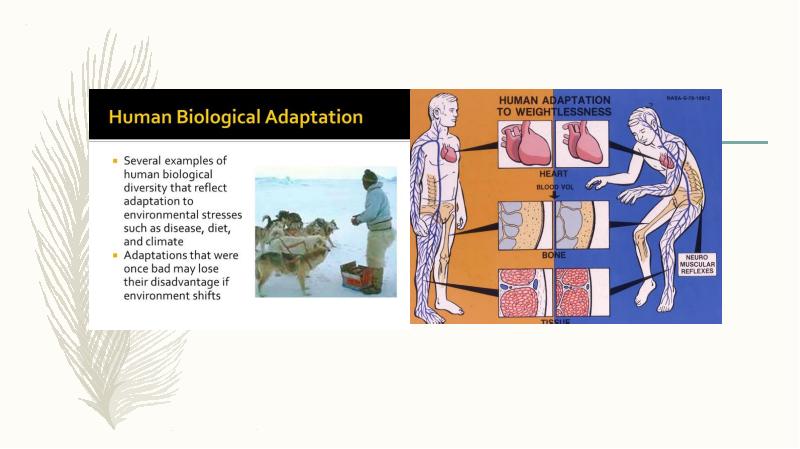Описание слайда:
Human adaptation to environmental change is best understood over long temporal scales. The pace of environmental and social change is often slow and multigenerational, although it may become rapid when societal or planetary boundaries, or system thresholds (so-called tipping points), are exceeded (cf. Rockström et al. 2009; Raworth 2012, 2017; Howard 2013; Steffen et al. 2015). Similarly, localised plant and animal communities may take time to adjust to changes in climatic conditions. Over time, these shifts are manifested in changes in the structure, health, and diversity of ecological communities (Walther et al. 2002; Campbell et al. 2009). The critical nexus for human adaptation, then, is not so much change in global temperature or precipitation regimes, but rather the consequent and relevant local changes in biodiversity that support the web of life. As discussed in Howard (unpubl. results), species’ invasions can occur in a very short time frame, and can also provoke rapid human responses—thus providing a ‘real-time’ prospective for analysing human adaptation to biodiversity change
Human adaptation to environmental change is best understood over long temporal scales. The pace of environmental and social change is often slow and multigenerational, although it may become rapid when societal or planetary boundaries, or system thresholds (so-called tipping points), are exceeded (cf. Rockström et al. 2009; Raworth 2012, 2017; Howard 2013; Steffen et al. 2015). Similarly, localised plant and animal communities may take time to adjust to changes in climatic conditions. Over time, these shifts are manifested in changes in the structure, health, and diversity of ecological communities (Walther et al. 2002; Campbell et al. 2009). The critical nexus for human adaptation, then, is not so much change in global temperature or precipitation regimes, but rather the consequent and relevant local changes in biodiversity that support the web of life. As discussed in Howard (unpubl. results), species’ invasions can occur in a very short time frame, and can also provoke rapid human responses—thus providing a ‘real-time’ prospective for analysing human adaptation to biodiversity change













































